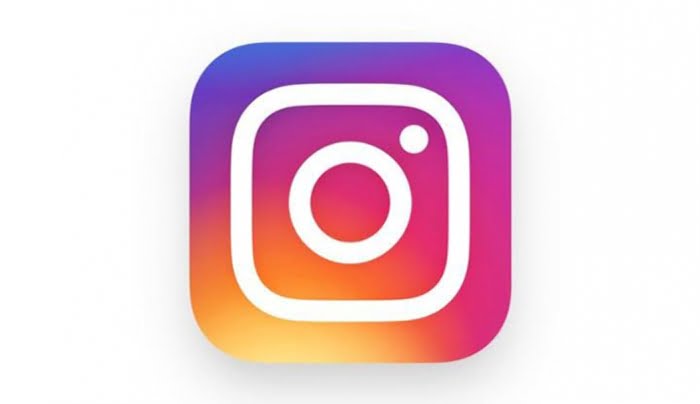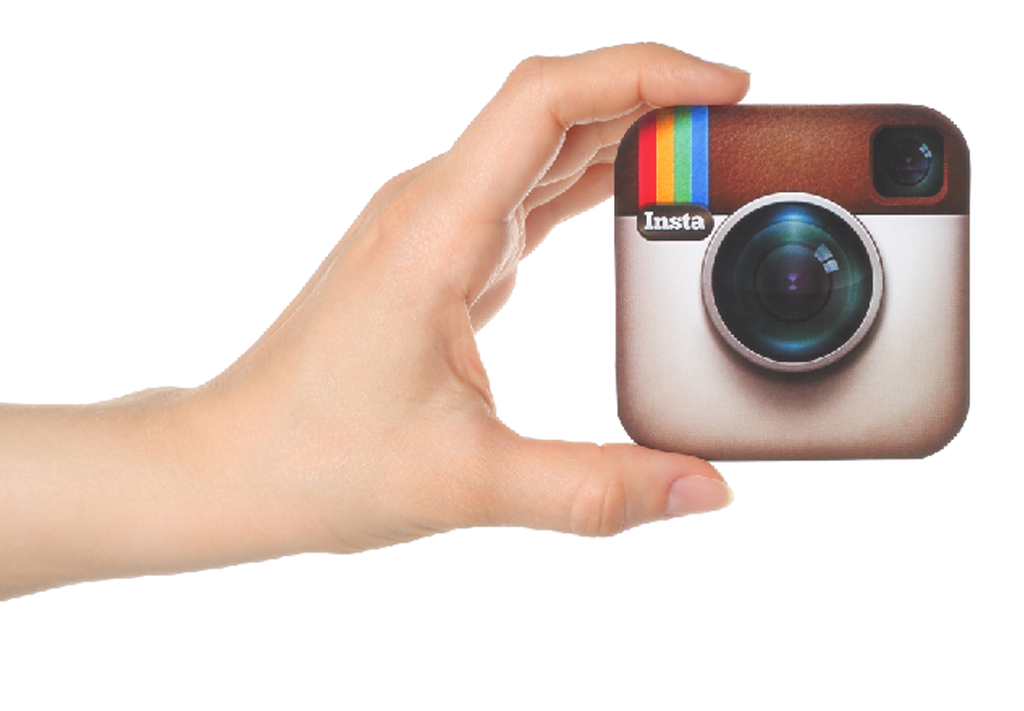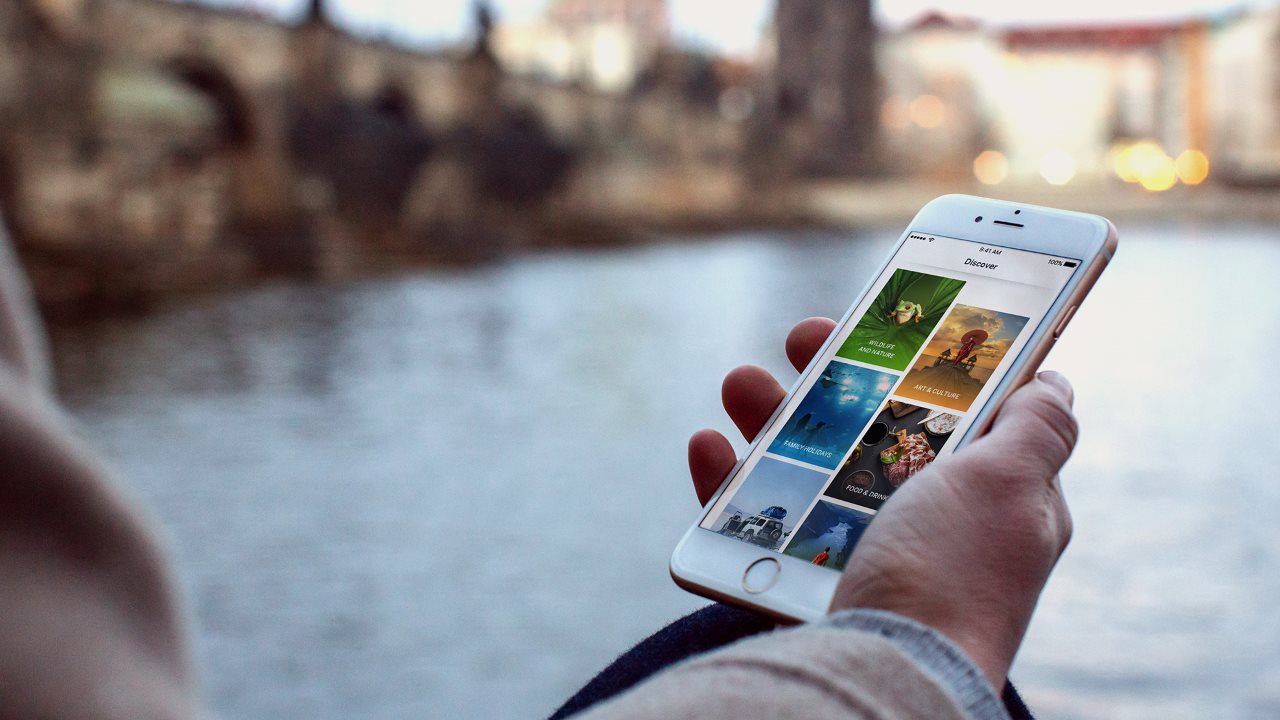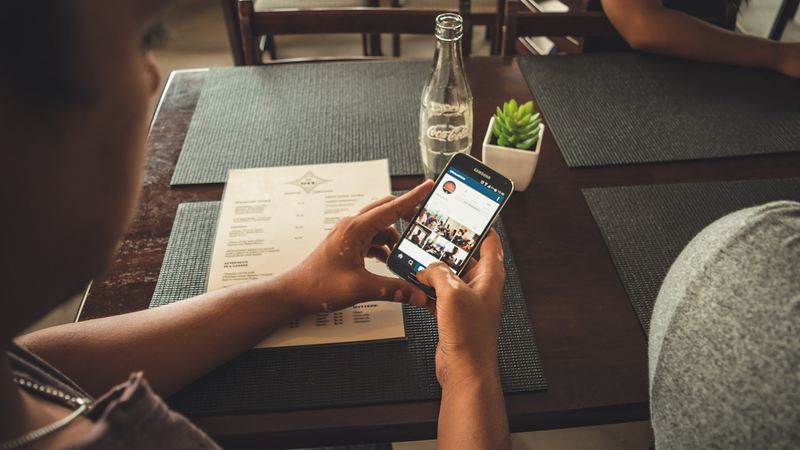

Instagram is one of the most popular social networking platforms in the world. It boasts a community of over 80 million users. Its fan base is constantly growing. A versatile and mainstream networking site could contribute immensely to the SEO efforts of any business or company trying to grow and make its presence felt online.
As far as Instagram is concerned everyone seems to be a professional photographer. More than 50 million pictures are shared every day on Instagram. As more and more people are coming to know about this unique photo-based platform they are incorporating Instagram in their way of life. You could use Instagram for promoting your brand thereby, increasing web traffic organically. Here are a few reasons why Instagram should be used for your SEO.
Helps in Boosting Brand Awareness
Instagram is a platform where an ordinary picture could be transformed with the help of vintage filters, as well as, effects. Moreover, hashtags are allowing users to effectively narrow down searches. On Instagram brands could create advertisements on a much more personal level.
Instagram is equally open to high-quality DSLR photos to the simple selfie. It welcomes all sorts of photos. You can easily create and maintain an Instagram account for your precise brand. However, there are a few things to keep in mind before joining Instagram.
First of all, you need to have the willingness to click pictures. You do not need to employ a professional photographer for doing this. You simply need to click pictures on your own provided you could produce high-quality pictures that boost your brand frequently. It is pretty obvious that the more natural the photos look; the better would be the response. It should not look like any advertisement as nobody would be interested in advertisements.
Find out if the brand that is being promoted is actually visually engaging spontaneously. In case it is not, you need to figure out an efficient way of incorporating it into your pictures. You could consider using the profile information for promoting your brand or company with a picture of yourself or a logo representing your precise brand. Include a link to your precise website. If Instagram users appreciate your content, they would try to learn more about it.
Effectively Aids in Managing the Posts’ Frequency
Spamming is never welcome and you must always keep that in mind. While using Instagram, keep track of how frequently you are posting pictures. If you are going on flooding the Internet with your pictures at every opportunity possible nobody is going to appreciate that. Try maintaining a proper schedule regulating when photos are to be uploaded instead of forcing and overdoing your brand on Instagram. This would prove to be quite effective and time-saving. Your profile should have quality images featuring your brand or products in a smart and appealing manner. It is a better idea to do that consistently and not jamming your profile with photos that make no sense.
Best Platform for Holding Photo Contests
An easy way of boosting your presence on the platform is by organizing a photo contest which would be necessitating contestants to use your specific products. This is truly an effective way of promoting your brand and also, interacting with your Instagram followers. By using a precise hashtag you could inform your followers regarding the photo contest maybe a few days in advance. Everybody participating in the event would automatically promote your brand. You could boost participation by offering winners enticing prizes. You would land up with more followers than you had ever before. When people are uploading their photos with the relevant hashtag, their followers would be noticing your brand and would like to take part in the activity.
Great for Engaging Audience and Promoting Organic Traffic
You could effectively engage your audience by using fun contests and quality pictures. Instagram is a wonderful platform for expressing creativity and sharing memories. If you have an eye-catching brand or product and wish to really make the most of the photo-sharing app, start replying to comments and staying involved and connected with your followers. Use hashtags just like you would be using SEO keywords. Consider terms and phrases that aptly describe your brand or product and use them effectively. Instagram is definitely the place to be in if you have a picture-worthy product.
Conclusion
Do not undermine the role of Instagram in promoting your brand. Instagram helps you to stay connected with millions of people and helps you to completely revolutionize the outcome of your brand or business.
Author Bio: Henry Connors is an SEO specialist who has recently taken to active blogging. He often advises his followers regarding effective ways of boosting organic traffic and increasing the number of Instagram followers. He has an impressive fan base and is an avid blogger.
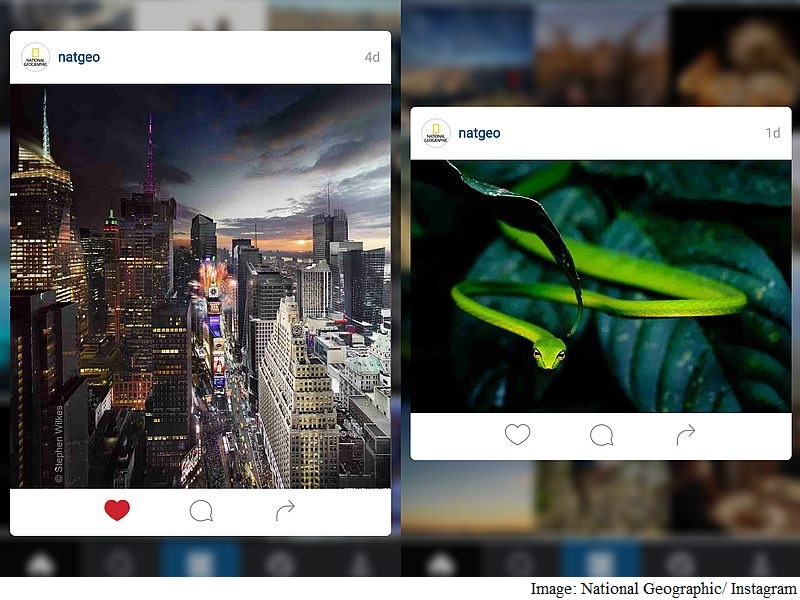
Instagram last month added the 3D Touch feature in its app v7.13.0. However, it later for a short time pulled the feature for unknown reasons. Now it appears as if the company has brought back the feature in v7.14.0 of the app, which is rolling out to users.
Support for 3D Touch allows users to use ‘Peek and Pop’ gestures based on the pressure applied on the screen of the iPhone 6s and iPhone 6s Plus. In the case of Android however, hard or soft presses will not bring up additional options – what with the paucity of Android phones with pressure sensitive displays.
With the help of 3D Touch feature on Android, Instagram now lets users tap and hold on an image thumb, which then expands and shows a preview along with the option to comment, like, and share. The image would shrink back to its thumb size once the user removes the finger from the display. Users can also drag their fingers to any of the three options and directly comment, share, and like the image all while in the preview mode. A simple tap on the image will open it full size like it does regularly. The latest version can be downloaded from Google Play.
Instagram also been testing multiple account support on its Android app, specifically, for users part of its beta programme.
The photo-sharing service had last month announced that its user base in India doubled over the last year. Instagram passed the 400 million user mark in September and had also claimed that it had over 80 million pictures shared daily.
Last month, according to an independent researcher named Wesley Wineberg, there are multiple vulnerabilities in Instagram, which if exploited, can give anyone complete control of the service. After informing to Facebook, the company offered him reward for disclosing one of the bugs but also contacted his employer and threatened him with legal action.
[“source-gadgets.ndtv”]

In this article, we will give you some tips about blogging on Instagram. Obviously, we cannot tell you everything about Instagram in just one article, but we will do our best to highlight the most essential tips to adequately blog on Instagram. We will start with what you should do with the text space you got. Next, we will talk about how you can create a photo album on Instagram, which is a very important aspect of your account. Thirdly we will give you tips on content creation. After that, we have some tips on how to maintain and promote your Instagram account. Lastly, we will talk about how to make a book blog on Instagram.
A few tips on writing on Instagram
Whenever you post something on Instagram you need to make sure that you give a large block of information. You can never ever post an empty canvas! Remember this. You also need to break the message into essential pieces. Keep the following rule: One paragraph – one thought. And do this with a line break. Remember that there should be no space at the end of the phrase.
If you have trouble with inspiration or remembering where you wanted to talk about, you should consider to either use notepad or notes on your phone to write small notes for ideas every time something pops up in your head. By doing this you will make it yourself a lot easier to format your posts. You just have to write – copy, insert emoji in the part where it is an essential emphasis. And the emojis can also help you to make up lists.
Another essential tip for writing: If you ever have so much text that it does not fit properly, type the remaining thoughts in a regular editor, take a screenshot and add to the gallery together with the primary picture.
Remember the golden rule: ”Write naturally, inspiring, even if you have a complicated and dangerous topic.”
How to create a photo album for Instagram
Visual perception of your Instagram page plays a significant role in its development. Still, Instagram remains a network for visual media. Buy Instagram comments to increase your credibility as an artist. To make a beautiful picture is not as difficult as it seems. The main thing to study the theory of composition, lighting and a lot of practice. There are free mobile photography lessons on the Internet. View pages of famous companies or people and notice interesting details.
It is better to post pictures every day, one or two during the activity of your target audience. Try to identify this part of the day with a practical method, publishing during the week at different hours: in the morning, in the afternoon and in the evening. The results of the experiment are well seen in the statistics of the account. The button is located in the upper right corner.
Content Creation Tips
- Look for unfamiliar angles. Any object will look unusual and beautiful if you approach the matter with fantasy.
- Process images in the same style: color, image and text sequence (chess format), frames.
- Do not overload the picture. It should have one main idea.
- Products and landscapes dilute portraits of people, animals.
- Take multiple shots at once. They will come in handy on the day when shooting is not possible.
- Use backgrounds, decorations. It could be anything. Even an old sweater, if only it is photogenic.
- Stroll through the city, coffee shops, parks, to catch unusual and beautiful moments in the collection of materials for the posts.
Successful applications for picture development:
- Vsco cam
- Snapseed
- Diptic
Do not forget about the useful tools of video and Instagram story. Both the first and second are popular among users and advertisers. The Instagram videos are short, but make up a plot or a logical sequence for them. Look for unusual angles, break the shot frames of the surrounding reality, details. Add the right music.
Another tip on maintaining and promoting an account
If your ultimate goal is monetization, be sure to go beyond your audience and profile. To find new followers it is sometimes enough to write regularly insightful comments on posts on more well-known pages.
Also, do not leave the questions of your followers unanswered. Put a moderate amount of hashtags with your post. Check out your competitors and invent your personal hashtags that you can write together with each post.
How to make a book blog on Instagram
Such profiles can create stories of book lovers. This direction is now gaining momentum. These pages are especially loved by enthusiastic readers. The account maintenance itself is not much different from any other. The requirements are the same: a beautiful visual series, edited, readable, exciting text.
What you can write about:
- Feedback on the work.
- A story about the novelties.
- Moments from the biography of writers.
- Myths associated with any publications.
- News.
- The roles in books.
- Reading techniques.
- Congratulations on the different holidays.
- And much more.
Photo series depends entirely on the fantasy of the page creator. There are various ideas with beautiful objects, scenes, unusual angles,…
Book, as well as the rest, is monetized. If you lead it with a soul and you already have at least a thousand followers, write to the publishing house with a proposal for cooperation. Tell about yourself, give a link to the profile, show the statistical data and tell them with what conditions you want to work with. Participate in contests, write specific hashtags, thematically related to your work.
Conclusion
We told you how to start and adequately blog on Instagram, we looked at topics for its maintenance. This article does not cover all the secrets of this social network, but we gave essential tips. Using them, you will be able to master the social media networking site called Instagram.
[“source=thesportsdaily”]
Trips App by Lonely Planet: Where Instagram Meets Google Photos


HIGHLIGHTS
- Trips by Lonely Planet is available on iOS
- It lets you create a curated version of your holiday
- You can follow other people for travel ideas
Lonely Planet – well-known for its travel guidebooks – is stepping out into the social realm. Its new app, Trips, wants to help you share your travel experiences with fellow travellers, while being inspired by trips other people take. Essentially, it wants users to create their own guides for each other, and help foster a community in the process.
It’s not so much a social network in the traditional sense, but rather a curated way to present your travels. Sure, you could create a Facebook album for all to see, but it’d be buried amongst thousands of other pieces of content. Or like millions of others, you could put your vacation photos up on Instagram, and make use of its album feature for a slightly-more curated feel. The lack of easy navigation still persists with Instagram though, undercutting the experience.
Neither will give you what Trips attempts to offer. The Lonely Planet app creates a chronological feed out of your vacation pictures and videos, replete with headers, captions, text, location tags, and maps. Think of it as Instagram meets Google Photos albums, albeit minus the former’s size, and the latter’s AI-smarts.
At first start, Trips will recommend you to follow a bunch of fellow travellers, curated by Lonely Planet itself. Later, you can add your friends, or select from other strangers whose holidays appeal to your liking. Your home page will then be populated by trip cards, all of which are a virtual scrapbook in themselves.

The home page and Discover tab of Lonely Planet’s Trips
Then there’s the Discover tab, which lets you pick from a variety of holiday types to browse through. There’s Adventure, Wildlife and Nature, Cities, Ruins, Road Trips, Festivals and Events, Art and Culture, and so forth. Each of these contain trips shared by the community or the Lonely Planet team, such as “The Wilds of Namibia”, “Crossing the Romanian Mountains”, or “A Week Around Iceland”.
To create your own trips, you select the blue-coloured plus symbol button in the middle, which takes you to your photo library. If you only use your iPhone to take pictures, this will suit you fine. But if you carry a professional camera with you, and those pictures are on Google Photos, Dropbox, or some other cloud service, you’ll need to import them yourself first. It’s a restriction baked in by Apple, one that will hopefully be lifted with the introduction of Files in iOS 11.
Once your pictures are in the app, Trips will attempt to sort them on its own, and use embedded geotags to create a map and name. It creates new sections whenever you change location, and then hands it off to you to make further additions, such as changing the title, adding an intro, and putting captions or tips in between your pictures.

The opening page and inside look at a trip in Lonely Planet’s Trips
The option to collect your pictures in one place is what separates Trips from Instagram, while the ability to add captions is how it adds onto the Google Photos album experience. After you’ve finalised the look of your curated trip, you can choose it post it publicly, or share it privately with people you know.
This brings us to one shortcoming of Trips that people may not like. Although Trips allows you to view your well, trips, on a desktop, you can’t make any changes or create new ones from the browser. In fact, you can’t even view someone’s profile on a computer. By contrast, Google Photos is a full-fledged experience on both desktop and mobile. Plus, Photos’ map widget (below) – which creates two points and a dotted line to signify travel – is a lovely touch that helps visualise your journey.
In itself, Trips is a pretty way to browse through vacation ideas, glean some tips, and offer your own experiences. It’s a digital magazine that’s continuously updated, but it doesn’t do anything more that. You can’t edit your images inside the app, and you can’t leave comments on trips created by people you know.

Map widget in Lonely Planet’s Trips, and Google Photos respectively
There’s some work to be done here, and it’s definitely worth the effort, considering the size of the travel market. Studies have shown that millennials are more interested in saving up for travel than in buying a house. At the same time, people spend 85 percent of their time with just five of the apps on their phones, so it’s going to take some convincing to make people choose Trips over Instagram.
The latter doesn’t offer the former’s level of curation, but it’s where all your friends and family are. And that counts for a lot.
Trips by Lonely Planet is now available on iOS.
[“Source-gadgets.ndtv”]
Trips App by Lonely Planet: Where Instagram Meets Google Photos

HIGHLIGHTS
- Trips by Lonely Planet is available on iOS
- It lets you create a curated version of your holiday
- You can follow other people for travel ideas
Lonely Planet – well-known for its travel guidebooks – is stepping out into the social realm. Its new app, Trips, wants to help you share your travel experiences with fellow travellers, while being inspired by trips other people take. Essentially, it wants users to create their own guides for each other, and help foster a community in the process.
It’s not so much a social network in the traditional sense, but rather a curated way to present your travels. Sure, you could create a Facebook album for all to see, but it’d be buried amongst thousands of other pieces of content. Or like millions of others, you could put your vacation photos up on Instagram, and make use of its album feature for a slightly-more curated feel. The lack of easy navigation still persists with Instagram though, undercutting the experience.
Neither will give you what Trips attempts to offer. The Lonely Planet app creates a chronological feed out of your vacation pictures and videos, replete with headers, captions, text, location tags, and maps. Think of it as Instagram meets Google Photos albums, albeit minus the former’s size, and the latter’s AI-smarts.
At first start, Trips will recommend you to follow a bunch of fellow travellers, curated by Lonely Planet itself. Later, you can add your friends, or select from other strangers whose holidays appeal to your liking. Your home page will then be populated by trip cards, all of which are a virtual scrapbook in themselves.

The home page and Discover tab of Lonely Planet’s Trips
Then there’s the Discover tab, which lets you pick from a variety of holiday types to browse through. There’s Adventure, Wildlife and Nature, Cities, Ruins, Road Trips, Festivals and Events, Art and Culture, and so forth. Each of these contain trips shared by the community or the Lonely Planet team, such as “The Wilds of Namibia”, “Crossing the Romanian Mountains”, or “A Week Around Iceland”.
To create your own trips, you select the blue-coloured plus symbol button in the middle, which takes you to your photo library. If you only use your iPhone to take pictures, this will suit you fine. But if you carry a professional camera with you, and those pictures are on Google Photos, Dropbox, or some other cloud service, you’ll need to import them yourself first. It’s a restriction baked in by Apple, one that will hopefully be lifted with the introduction of Files in iOS 11.
Once your pictures are in the app, Trips will attempt to sort them on its own, and use embedded geotags to create a map and name. It creates new sections whenever you change location, and then hands it off to you to make further additions, such as changing the title, adding an intro, and putting captions or tips in between your pictures.

The opening page and inside look at a trip in Lonely Planet’s Trips
The option to collect your pictures in one place is what separates Trips from Instagram, while the ability to add captions is how it adds onto the Google Photos album experience. After you’ve finalised the look of your curated trip, you can choose it post it publicly, or share it privately with people you know.
This brings us to one shortcoming of Trips that people may not like. Although Trips allows you to view your well, trips, on a desktop, you can’t make any changes or create new ones from the browser. In fact, you can’t even view someone’s profile on a computer. By contrast, Google Photos is a full-fledged experience on both desktop and mobile. Plus, Photos’ map widget (below) – which creates two points and a dotted line to signify travel – is a lovely touch that helps visualise your journey.
In itself, Trips is a pretty way to browse through vacation ideas, glean some tips, and offer your own experiences. It’s a digital magazine that’s continuously updated, but it doesn’t do anything more that. You can’t edit your images inside the app, and you can’t leave comments on trips created by people you know.

Map widget in Lonely Planet’s Trips, and Google Photos respectively
There’s some work to be done here, and it’s definitely worth the effort, considering the size of the travel market. Studies have shown that millennials are more interested in saving up for travel than in buying a house. At the same time, people spend 85 percent of their time with just five of the apps on their phones, so it’s going to take some convincing to make people choose Trips over Instagram.
The latter doesn’t offer the former’s level of curation, but it’s where all your friends and family are. And that counts for a lot.
[“Source-gadgets.ndtv”]
Instagram Gets ‘Superzoom’ Camera Format, Halloween-Inspired Face Filters and Stickers

HIGHLIGHTS
- The “Superzoom” feature adds three-second zoom to your videos
- Halloween-centric face filters and stickers debuting on November 1
- The new features are designed for both Android and iOS devices
Days before Halloween, Instagram has added an enhanced camera format called Superzoom that helps you dramatise your videos. The photo-sharing service has also brought a list of Halloween-centric face filters and stickers that will be available until November 1. The new features are already available for Android and iOS devices with Instagram version 20.0, which is already on the App Store and Google Play.
First in the list of new updates that the Instagram app for Android and iOS has received is the Superzoom feature, which will let add some fun to your simple video along with a dramatic background sound. You can opt for the new camera format by tapping the Superzoom option – next to Boomerang – under the record button. Once enabled, you just need to hit the shutter button to add a three-second, automatic zoom in effect with suspenseful music to your clips. You can use the front or rear camera to add the ultrazoom effect to your shots, and the feature can be applied even to the videos you’d like to share in direct messages.

Photo Credit: Instagram
The Superzoom feature is an extension to Boomerang, which was debuted as a native app in 2015 and eventually arrived as a feature on the Instagram app in November 2016. It was introduced to let users create looping videos – a competitive move to rival Snapchat.
Instagram has additionally added the face filters that allows you to transform your face or one of your loved ones’ face into a zombie, vampire, flying bat or hide it under mysterious fog to celebrate the day with horror. Likewise, there are Halloween stickers that you can add to your existing photos and videos.
In September, Instagram announced that it reached the benchmark of 800 million users. The Facebook-owned service has a base of 500 million daily active users that need to be served with new features — like the latest ones — to continue their engagements.
[“Source-gadgets.ndtv”]
A Trail For All Cities: The Journey Of Trell From An Instagram Handle To A Visual Blogging Platform With Over 30K Users
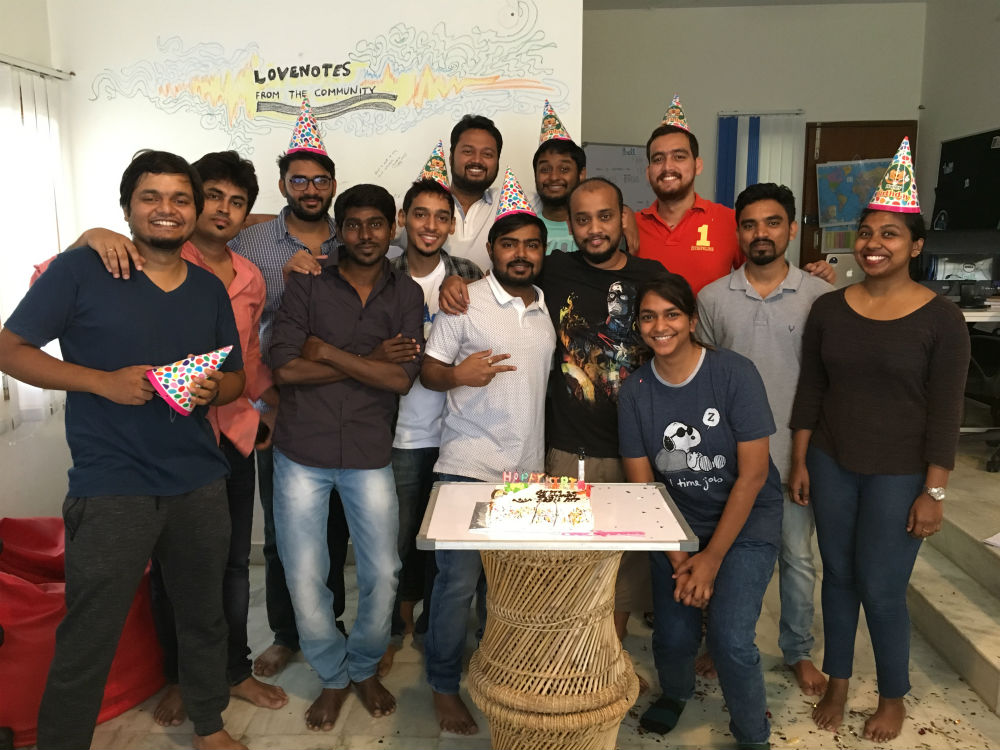
“What you seek is seeking you.” For Pulkit Agrawal, Co-founder and CEO Trell, a visual blogging app which started its journey from Instagram, that search started around three years back in Mumbai.
It was the time of Mumbai’s most famous festival Ganesh Chaturthi and Pulkit was looking for a good pandal to go to. He reminisces, “I had been in Mumbai for four years but I never got the chance to see good Ganesh Chaturthi celebrations apart from the famous ones. I didn’t know how it was celebrated in the local streets. Even on the Internet, almost everyone talked about those four-five famous pandals which everyone knows of.”
So Pulkit resorted to a local Mumbai friend who took him to those unheard of pandals which no one apart from a local would know of! For him, those culturally rich pandals on myriad themes like Swachh Bharat Abhiyan, Bollywood stars’ whereabouts, splendid Tamil architecture, Ramayana skits, were a revelation. When he asked his friend how she knew about these hidden gems, she revealed that information about such places is only available with localities and they would not share it anywhere online unless they are into blogging. More so, blogging is difficult and tedious for people who are not into writing and do not have time to write long-form content.
And that sparked the idea of filling this gap of sharing local interesting knowledge, even for people who are not into blogging. Pulkit explains, “So we wanted to solve this problem of how we can make it easier for people to blog and make it more fun. The idea was to make blogging‘fun’, ‘visual’ and ‘intuitive’ for everyone including the teenagers so that they could use it easily to start sharing these local titbits and inspire journeys for people like us.
Thus, Trell (TRail experiences and tELL your friends) was born in November 2016. The team noticed that on Instagram there were lots of handles like Mumbai foodie were picking up quite well. They had more than 200,000 followers and getting a lot of likes and comments. So they first decided to start on Instagram to test waters, to see how people are discovering new things through such handles.
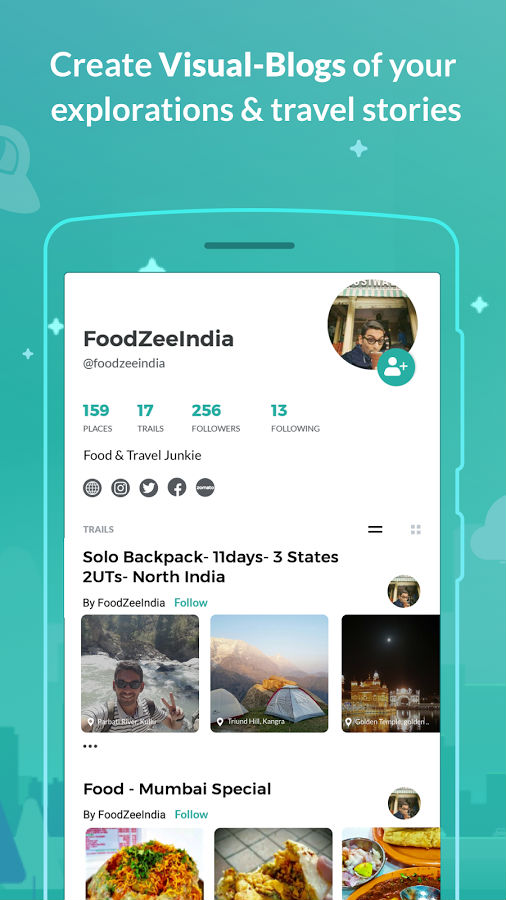
The visual blogging platform started off first as an Instagram handle (@trellingmumbai) in Mumbai and posted about exclusive and relatively unknown things in the city. Within four months, Trell started going viral with more than 40,000 followers. For Pulkit and his co-founders Prashant Sachan, Bimal Kartheek Rebba, Arun Lodhi and Nirav Sheth, that was a validation for the fact that there is a need for something like this. The team also started hosting meet-ups like photo walks or food ones and roping in some of the really good food, travel influencers. This helped them understand how these influencers are using Instagram to their advantage.
Interacting with more than 1000 bloggers and travelers personally led them to realise their needs, restrictions of existing platforms and gaps in the ecosystem. As a result, the team discovered that writing in English is not natural to all, so most were more inclined to using visual mediums. Thus, by combining these learnings from both the consumer’s and the creator’s end, they came up with a platform.
Trell is typically a visual blogging platform where people can create these visual stories, incorporate visual tags to make it easy to share their story. The location-based storytelling platform helps people create beautiful collections of their travel stories, favourite food places, and other explorations. It helps them in discovering new experiences around them through their peers, which they can save in a self-reminding bucket list. The startup launched the Trell app in July 2017 which is now is accessible on Android, iOS and Web.
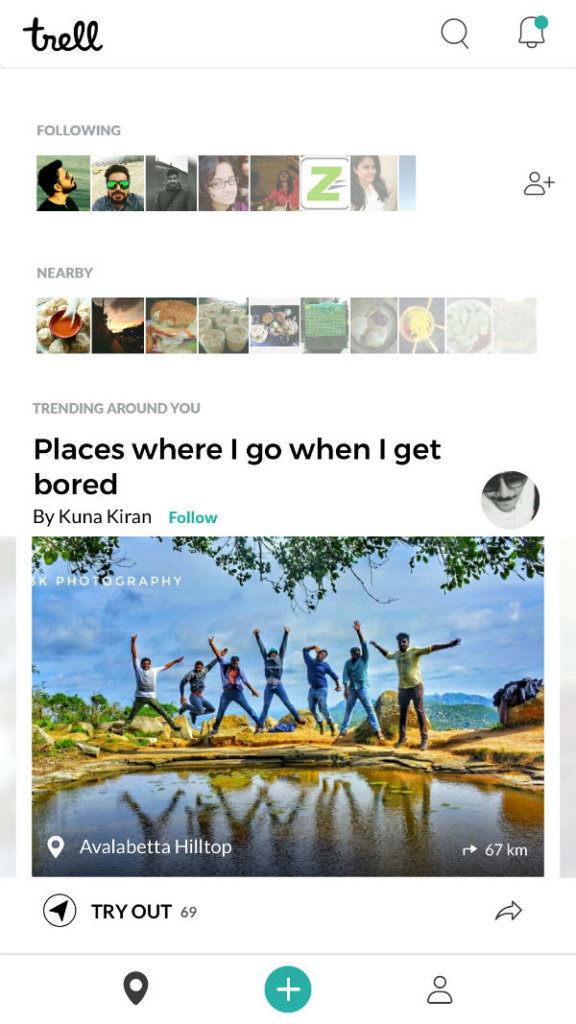
30K Users, 80K Visual Blogging Posts, 300K Instagram Followers
Trell’s initial focus was on Instagram, where it rapidly grew to more than 100,000 followers. Today that number stands close to 300,000. Post launching the latest version of the app two months back, the visual blogging platform now claims to have amassed more than 30,000 users who are using the platform actively and have created posts related to more than 25,000 locations. As of today, Pulkit claimed that there are roughly 80,000 visual blogging posts on the platform.
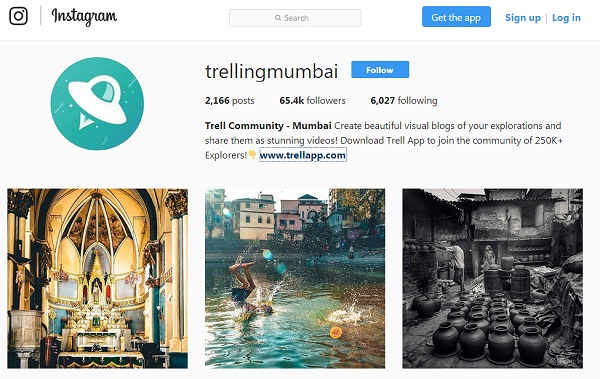
Trell reveals that people are not using it a normal blogging platform, but are rather talking about different things such as beautiful bungalows in Indiranagar (Bengaluru) or something beautiful in their community parks. The team claims the community in total has followers spread across 15 cities and reaches out to people with 5 Mn+ weekly impressions on Instagram.
Trell gives travelers and foodies an avenue to share their explorations as beautiful visual blogs called “Trails”. All trails are Google searchablewhich ensures the discovery of these visual blogs & people as they expect from a traditional blogging platform.
The startup is currently bootstrapped but in advance talks with some prominent investors for closing an angel-funding round. As per Pulkit, the funding will enable Trell to focus on enhancing the app experience and fuel user-base growth going ahead.
Trell Makes To ‘Top 20’ For The Worldwide Mobile UX Awards
As far as monetisation is concerned, Trell started monetising from its Instagram handle. And the same avenues are being leveraged on the platform as well. For instance, though the Instagram handle, it was able to get some of the advertisers to advertise on the handle or basically do influencer marketing. The startup also held various competitions and meetups for various brands.
In addition, Trell is also focusing on the data about the users and how to personalise it. So on the platform, it has an action button called Tryout. If someone likes some post about a place, one can tap on Tryout. It bookmarks the post by adding it to a self-reminding bucket-list. So whenever he/she is around that place, it will remind him/her that the place is in his/her bucket list. This is something the startup can again leverage for advertising. Also, the startup will explore in-app native advertisements and revenue through promoted places and business claims.

Along the way, Trell also got selected in StartupBootcamp’16 – (Europe’s Largest Accelerator) as “Top 10 promising startups worldwide”, Nasscomm’s 10K Program and FBStart’17 for the same. It is also the only Indian Startup which recently got featured in ‘Top 20′ for the Worldwide Mobile UX Awards which includes other heavyweights like Crunchbase, Wattpad, EventBrite etc recently got awarded for offering the best user-experience in Social and Communications category.
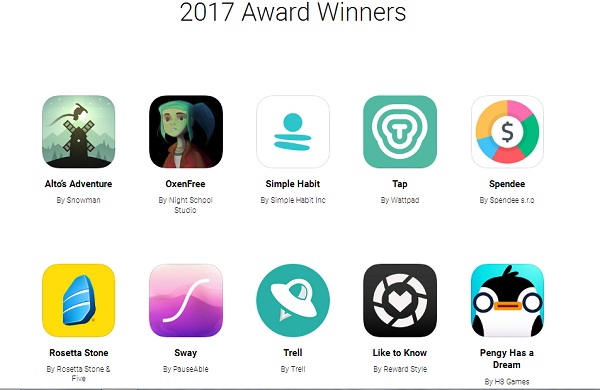
The Other Visual Discoverers
Pulkit states that Trell is not trying to compete with Instagram or any other social network because Trell doesn’t see itself as a social network. “We see ourselves as an interest-based network wherein people are coming and blogging about stuff they have been already doing,” he says. He points out that there will be very less non-useful content on Trell and more of interest based content on Trell. This contention is based on the feedback from the users also; who Pulkit claims do not compare it with Instagram or any other platform. Specifically, because Instagram is about your highlights of the living moment, whereas Trell is about the things that you explore on the basis of your interest.
However visual discovery is a growing space and Instagram and Pinterest remain one of the big contenders in this space. Another Bengaluru-based startup galleri5 also focuses on the same themes, enables users to find amazing photos of things they love, such as amazing places to travel to, interesting activities to try out, tempting culinary dishes to experiment and any other thing that might inspire someone. Hence Trell is not the only Indian startup surfing the visual discovery space. Meanwhile, in the discovery space, there are many others like Little Black Book.
Trell’s focus meanwhile is on how it can grow the community further. In that respect, the 10 member team is now trying to grow the community in Bengaluru specifically locals and travellers by organising meet-ups and competitions. As of now, most of the content on the platform is currently related to Bengaluru, then Mumbai, and then pan India.
The team believes that with increasing penetration of AI and IoT in this space, will help people further to ease the problem of visual discovery.
“The visual discovery space will become very interesting. If you see, right now even a class four or five student has a cell phone in his hands. He/she might not be able to write but is able to click photographs. There is the incredible potential that has got unlocked because of visuals and mobile. And on the other hand, there are still things going the traditional way. For instance, blogging, which is still desktop based. We see an interesting evolution that visual discovery will bring and we definitely want to be a part of it.”
Editor’s Note
As per Pulkit, the visual blogging platform has its sights set on the huge potential of the O2O Indian market with the total size of $92.5 Bn. With major expenditure in O2O space (~80%) for brands being on marketing/advertising and data analytics, Trell aims to leverage this opportunity. However that being visual discovery and blogging is a vast space full of big contenders. Today, over 2 Bn photos are uploaded online every single day, with almost 90% of content being user-generated.
Instagram, Pinterest are some of the heavy-weight and heavily funded players in this space. By focusing on the mobile platform, Trell has its fundamentals in place for growth as the number of smartphone users increases. Smartphones which are projected to reach over 500 Mn customers in India by 2018 is going to see an app explosion soon. Last year, Indians downloaded 6.2 Bn apps through Google Play, up from 3.6 Bn in 2015, according to a recent report by App Annie. That marks the first time India seized the top spot for Android-app downloads, toppling longtime leader US. Trell’s timing is ripe but how far can even the visual blogging platform rise out of the shadow of its own more popular Instagram account to leverage this boom will be interesting to watch out.
[“Source-inc42”]
Blogging taken up more than just hobby, professionals use Twitter, Facebook, Instagram, Pinterest to push content

In the pursuit to stand out, many bloggers have begun to publish their content on social media platforms such as Twitter, Facebook, Instagram and Pinterest. It’s very crucial to drive traffic from these channels
to the core site, they say.
Ananaya Banerjee
“Naked Cricket’s timing just happened, almost like a streaker on a cricket field… there’s no explaining it really,” says Gaurav Sethi about his first blog. New Delhi-based Sethi, who shut his advertising agency in the capital in 2005, started Naked Cricket (a blog on cricket, with articles, songs, cartoons, etc, on the game) the same year. At that time, blogging was a relatively new phenomenon in India, but that didn’t deter him. Three years later, after warming up to the online space, 50-something Sethi, with some friends, started his second blog, Bored Cricket Crazy Indians (BCC!), which features other bloggers apart from Sethi and their commentaries on cricket. As early as a decade ago, the idea of blogging was very simple: most people considered it just a hobby and got around to it only on weekends. It was bloggers like Sethi who gave it a twist by pursuing it professionally. The appeal, of course, is manifold. As a profession, blogging offers a mix of subjects—fashion, food, travel, tech and much more—to write on, the opportunity to work on one’s own terms, as well as make a living out of it. For some like 30-year-old Harsh Agarwal, it was a ticket to live a “boss-free” life. New Delhi-based Agarwal, a professional blogger and entrepreneur, quit his job at Accenture in the national capital within the first five months of launching his blog ShoutMeLoud, which offers solutions to aspiring bloggers and enables them to build their own blogs, in 2008 and has never looked back since.
“I never thought blogging could be pursued professionally until I discovered Google AdSense,” he says. Google AdSense, like other ad programmes, is designed to display targeted advertisements on website pages through which website publishers generate revenue, depending on the number of visitors or clicks on the site. “I was amazed to discover that all I needed to do was write what I liked, get traffic and the money would just come in,” Agarwal says. Today, Agarwal has eight blogs—ShoutMeLoud is the most popular, he says, followed by ShoutMeTech, which offers tech solutions, and Wpfreesetup, which helps users navigate WordPress. Ads, undoubtedly, play a very important role in the life of a blogger.
But more than being just a source of income, ad contributions help bloggers deliver better content on time by providing an incentive, offers 30-year-old Srinivas Tamada, the brain behind the blog, 9lessons. US-based Tamada started his blog in 2009 as a way to offer unique solutions to complicated Web programming problems. Later, Tamada transformed his blog into a money-spinning venture when he built a commercial social network software, Wall Script 8, which aims to enable people to understand and build their own social networks. The software is currently available in two versions for purchase on the Wall Script 8 website priced at $89 and $109, respectively, and has been downloaded over 5,000 times till date, with several ad-on upgrades on sale with it. Clearly, bloggers like Tamada didn’t take long to catch up to speed with the lucrative side of the profession that opened up because of the Internet boom.
A recent inductee into the club is 33-year-old Charu Tripathi, who, after spending four years in the e-commerce industry, quit her job as a brand and marketing consultant in Mumbai in 2015 and started Le Hedonist, a luxury-fashion blog, the same year. “Seeing the whole magic of building brands from the ground up had me itching to create something of my own,” says Mumbai-based Tripathi. It was her friend Neha Dwivedi, a graduate in luxury brand management from ESSEC Business School in Paris, who pitched the idea to collaborate for a blog to Tripathi. “I believed this was a truer application of all that I had learned,” says 33-year-old Dwivedi. The two girls started Le Hedonist with the aim to educate Indian consumers about fashion and luxury, they say.
Then there is 43-year-old Kalyan Karmakar. The food columnist and author relocated to Mumbai around 15 years ago after spending his early life in Iran and the UK, where he worked as a market research consultant. Interestingly, it was his wife Kainaz, who works with an advertising agency, who nudged him in the direction of blogging, observing his passion for food over the years. Karmakar’s blog, Finely Chopped, started eight years back and has been instrumental in fulfilling his “life’s mission to give men the confidence to cook, so that they don’t have to depend on anyone else to eat well.” Karmakar’s blog has him trying out recipes he saw his mother whip up or those that catch his fancy every now and then. He posts videos of himself cooking, along with pictures of places he has travelled to just to eat something famous, tasty or special.
Finely Chopped has not only won awards from the Food Bloggers Association, India, every year since its inception in 2013, it has also spread to other social media platforms such as YouTube, where Karmakar conducts personalised food walks in Mumbai to introduce viewers to his favourite food haunts throughout the city. Interestingly, Karmakar isn’t the only one branching out to alternative media. In the pursuit to stand out, many other bloggers, too, have begun to publish their content on social media platforms such as Twitter, Facebook, Instagram and Pinterest. “It’s very crucial to drive traffic from these channels to the core site,” say Tripathi and Dwivedi.
Sethi of BCC! agrees. Bloggers need to use social media to reach out to the right people, he says. His advice to nascent bloggers? “(There is) no use writing in isolation. So be prepared to use social media tricks if you are starting a blog,” he offers. But in spite of its mass reach, social media has a flip side as well: the problem of plenty. With so many self-made experts in all fields, blogging is getting a tad bit saturated, admits Tripathi. The challenge that, hence, presents itself to bloggers, old and new, is how to be heard or seen over the clamour? Tripathi says it helps to give a thought to who one serves instead of just replicating the same content everywhere. “Bring a spin to your original idea,” the co-founder of Le Hedonist advises.
The other challenge is that of credibility. Agarwal of ShoutMeLoud ensures that the content published on his website goes through a basic checklist, verifying if it’s going to help someone programme their blog better. “I only publish it if the answer is yes,” he says. Similarly, cricket blogs like BCC! came up at a time when fearless comments in cricket journalism in the country were not aplenty, says Sethi. When he started BCC! in 2008 with a few blogger friends, they constituted pretty much all the Indian cricket bloggers back then. Soon, they added a Pakistani, a Bangladeshi and a Sri Lankan as guest bloggers. BCC! struck a chord with enthusiasts of the sport and even went on to win the BlogAdda Cricket Blogger Award three years back. “It has been one helluva ride,” says Sethi.
[“Source-financialexpress”]

